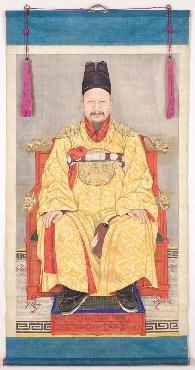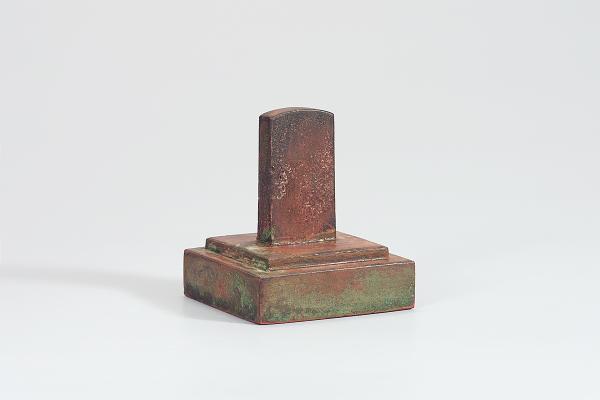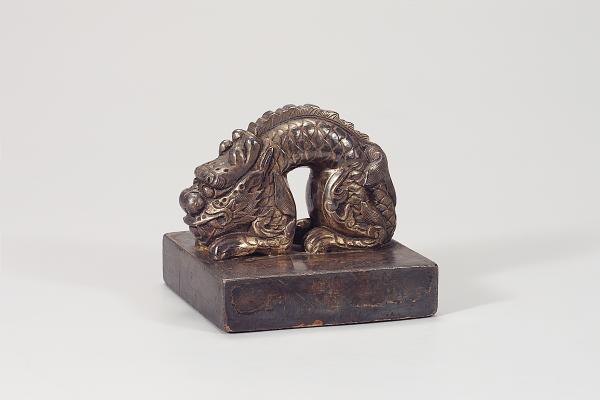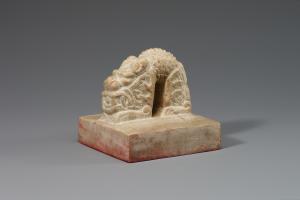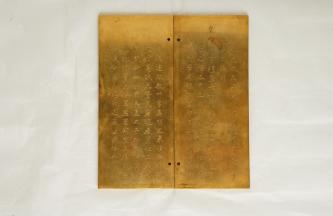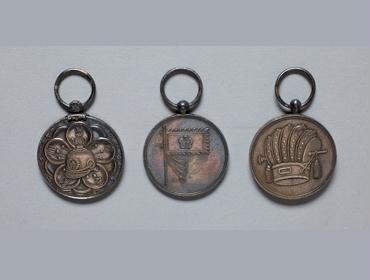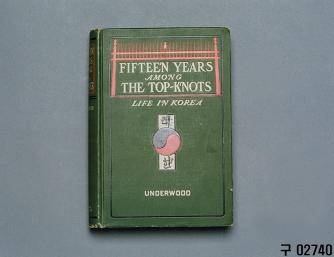-
중·근세관 대한제국

전시실 소개
-
대한제국
- 고종高宗은 1897년 10월 독자적으로 ‘광무光武’라는 연호를 제정하고, 국호를 ‘대한大韓’으로 바꾸어 대한제국이 자주 독립 국가임을 선포했습니다. 대한제국은 1899년 근대 헌법의 성격을 띤 ‘대한국 국제大韓國國制’를 반포하여 황제권을 강화하고, 여러 가지 개혁을 시도했습니다. 전차, 통신, 철도 등 서양의 문물이 속속 도입되면서 한양은 근대적인 도시로 변하게 됩니다. 암울한 정치적 분위기 속에서도 근대의 문물이 놀라운 속도로 생활 곳곳에 뿌리를 내리게 됩니다. 그러나 1904년 러일전쟁 후 대한제국은 일제의 반식민지로 전락하고 1910년 결국 일제에 국권을 침탈당했습니다.
- 해방 이후 지금까지 대한제국에 대한 부정적인 인식이 지배적이었습니다. ‘국망國亡’이란 결론에만 매달려 평가할 것이 아니라 당시 대한제국이 놓여 있었던 시대적인 특수성도 고려해야 합니다. 우리는 대한제국이 반봉건, 반외세, 근대화라는 역사적 과제를 안고 있었고 이를 해결하려고 노력했다는 점에 주목해야 합니다.
전시 동영상
* 이 영상은 음향을 제공하지 않습니다.
일제의 침략과 국권 수호 운동
('일제의 침략과 국권 수호 운동' 동영상의 대체텍스트입니다.)
러일전쟁 : 러일전쟁 Russo-Japan War 1904년 2월 러시아와 일본이 한반도에서 전쟁을 시작하였습니다. In February, 1904, Russia and Japan waged a war on the Korean Peninsula. 러일전쟁의 승리로 일본은 한반도 침략을 노골화하였습니다. After its triumph, Japan sought to formalize its sphere of influence over the Korean Peninsula. (한성을 거쳐 가는 일본군 Japanese troops passing through Hanseong, present-day Seoul) (압록강을 향해 가는 일본군 Japanese troops marching towards Amnokgang River) (러일전쟁의 첫 육상전 압록강 전투 The first land warfare between Russia and Japan near Amnokgang River)
을사늑약 : 서구 열강이 일본의 한반도 침략을 암묵적으로 동의함 The Western powers gave tacit approval to Japanese agression to the Korean Peninsula. 1905년 7월 가쓰라, 태프트 밀약 미국은 필리핀을, 일본은 한국을 통치하도록 미국와 일본이 협약함 The Taft-Katsura Agreement of July 1905 led to the control of the Philipines by the U.S and the control of Korea by Japan. 1905년 8월 영일동맹 영국은 청에, 일본은 한국에서 갖게 되는 이익이 침해될 때 필요 조치를 취함 The Anglo-Japanese Alliance of August 1905 allowed for Japan to take action to protect its interests on the Korean Peninsula. 1905년 9월 포츠머스 조약 한국에서의 일본의 우월권을 러시아가 인정함 The Treaty of Portsmouth of September, 1905 confirmed Japan's emergence as the pre-eminent power on the Korean Peninsula. 일제의 강압적이고 불법적 조약 체결 Illegitimate, coercive treaties under Japanese colonial rule. 1904년 2월 '한일의정서' 체결 일제가 한반도에서 군사상 필요한 지역을 자유롭게 이용 가능 Japan-Korea Treaty of February 1904 allowed the Japanese military to freely use land on the Korean Peninsula. 1904년 8월 '한일협정서' 체결 재정고문(메가다), 외교고문(스티븐슨) 고용 Japan-Korea Agreement of August 1904 forced the Korean Empire to hire a financial advisor and a diplomatic advisor recommended by the Japanese Government. 1905년 11월 을사늑약 체결 대한제국의 외교권 박탈 및 내정 장악을 위해 통감부 설치 The Eulsa Treaty of November 1905 deprived Korea of its diplomatic sovereignty and led to the establishment of the post Japanese Resident-General of Korea. 1907년 7월 정미7조약 대한제국 군대의 해산, 사법권의 위임, 일본인 차관의 채용 Japan-Korea Treaty of July 1907 led to the disbandment of the armed forces of the Korean Empire, loss of judicial sovereignty, and the appointment of Japanese vice ministers to the Korean government. (1904년 한일의정서 체결 Japan-Korea Treaty of 1904 was concluded in 1904) (1905년 을사늑약 체결 The Eulsa Treaty was concluded by force in 1905) (을사늑약이 체결되었던 경운궁 중명전 Jungmyeongjeon Hall, Gyeongungung Palace where the Eulsa Treaty was concluded by force)
순종 즉위 : (1907년 고종황제 강제 퇴위, 순종황제 즉위 Emperor Gojong abdicated by force and Emperor Sunjong took over the throne in 1907) 순종황제 순행의 의도 The idea behind the royal tour 1909년 1월 일제는 민심의 동향을 파악하고 한국 통치의 정당성을 선전하고자 순종황제의 순행을 강행하였다. The Japanese colonialists coerced the Emperor Sunjong into the royal tour in January 1909 with a view to understanding the public sentiment and promoting the legitimacy of the colonial rule. (1909년 순종과 이토 히로부미 부산 행재소 도착 Emperor Sunjong and Resident-General Ito Hirobumi at the temporary quarters in Busan in 1909) (순종황제 남순행 시 부산 광복동(현재) 일대를 지나는 어가행렬 The royal party of Emperor Sunjong in progression in Busan) (순종황제가 순행을 마친 후 창덕궁 인정전 앞 Emperor Sunjong in front of Injeongjeon Hall, Changdeokgung Palace after the royal tour)
경술국치 : 경술국치 '한일병합조약'의 체결 The day of national disgrace : signing of the Japan-Korea Annexation Treaty. 1910년 8월 22일 이완용과 데라우치 사이에 '한일병합조약' 조인. 8월 29일 황제의 칙유로 '한일병합조약'이 공포되었습니다. 그러나 을사늑약과 '한일병합조약' 모두 대한제국 황제의 비준을 제대로 받지 못한 불법 조약이었다. On August 22, 1910, prime minister of the Korean Empire Lee, Wanyong and Resident-General Terauchi Mastake signed the treaty. It was promulated on August 29, but both of the Eulsa Treaty and the Annexation Treaty were illegitimate since the emperor of Korea did not sign them. ('한일병합조약' 조약문 The Japan-Korea Annexation Treaty) (경술국치 - 일본에서 발행한 '한일병합기념' 엽서 Gyeongsul National disgrace - Postcard issued by Japan in commemoration of the annexation of Korea) ('한일병합조약'이 체결된 경복궁 근정전 Geunjeongjeon Hall, Gyeongbokgung Palace where the Japan-Korea Annexation Treaty was concluded)
국권 회복 항쟁 : 국권을 회복하려는 항쟁 Fight for independence. 을사늑약이 체결되자 조약 무효와 친일 매국노의 처단을 요구하는 상소와 자결, 침략 원흉을 응징하려는 의병 활동 등 전 민족적 항쟁이 거세게 일어났다. 또한 민족의 '힘'과 '실력'을 양성하여 국권을 회복하려는 계몽운동도 활발하게 전개하였다. After conclusion of the Eulsa treaty, people staged strong protests across the nation appealing for nullification of the treaty and execution of traitors, committing suicide as resistence, and organizing acrtivities of Righteous Armies. Also, the enlightenment movement was carried out to empower the public to regain sovereignty. (1905년 장지연 <시일야방성대곡:이 날 목놓아 우노라> 『황성신문』 1905년 11월 20일 Column titled "Deploring the day of national disgrace" contributed by Jang, jiyeon Hwangseongshinmun, the Newspaper "Imperial Capital News" on November 20, 1905) (을사늑약 소식에 '2천만 동포에게 죽음을 고한다'라는 글을 남기고 자결한 민영환 Min, Yeonghwan, a minister of the Korean government, committed suicide as an act of resistance to the Eulsa Treaty. He left his final message directed towards the people of Korea) (1907년 네덜란드 헤이그 만국평화회의에 파견된 특사 - 이상설, 이준, 이위종 Lee, Sangseol, Lee, jun, and Lee, Wijong, emissaries to the Hague Peace Conference in 1907) (일제에 항거하며 일어난 의병 Righteous armies fought against the Japanese occupation) (국채보상운동 - 일본에 진 나라의 빚을 갚자는 전국민이 참여한 운동 National Debt Redemption Movement - The national movement to pay off the debt to Japan) (항일 구국 투쟁을 다짐하며 손가락을 자른 안중근 의사 Independence activist, An, Junggeun had cut off the last joint of his finger to indicate his dedication to the fight for national independence) 대한독립의 소리가 천국에 들려오면, 나는 마땅히 춤추며 만세를 부를 것이다. I would dance and hurrah in the heaven if I heard my country gained independence. - 안중근 의사 사형 집행 전 최후 유언 (뤼순 옥중에서) - the final words by An, Junggeun before execution 大韓國人 安重根
-
-
-
위치

-
중·근세관
고려(918~1392), 조선(1392~1897), 대한제국(1897~1910)실로 꾸며진 북쪽 전시 공간은 당시의 역사를 엿볼 수 있는 자료를 전시하여, 관람객이 한국 중세, 근세의 역사를 쉽게 이해하고 흥미를 느끼도록 꾸몄습니다.








 X
X  페이스북
페이스북 